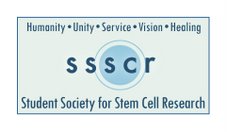Researchers dispute immortal strand hypothesis
Medical Research News
Published: Thursday, 30-Aug-2007
Printer Friendly Email to a Friend
How do adult stem cells protect themselves from accumulating genetic
mutations that can lead to cancer?
For more than three decades, many scientists have argued that
the "immortal strand hypothesis" - which states that adult stem cells
segregate their DNA in a non-random manner during cell division --
explains it. And several recent reports have presented evidence
backing the idea.
But in this week's issue of the journal Nature, University of
Michigan stem cell researcher Sean Morrison and his colleagues deal a
mortal blow to the immortal strand, at least as far as blood-forming
stem cells are concerned.
They labeled DNA in blood-forming mouse stem cells and painstakingly
tracked its movement through a series of cell divisions. In the end,
they found no evidence that the cells use the immortal-strand
mechanism to minimize potentially harmful genetic mutations.
"This immortal strand idea has been floating around for a long time
without being tested in stem cells that could be definitively
identified. This paper demonstrates that it is not a general property
of all stem cells," said Morrison, director of the Center for Stem
Cell Biology at the U-M Life Sciences Institute.
It remains possible that stem cells in other tissues use this
process.
"We've been able to show that this is not a mechanism by which blood-
forming stem cells reduce their risk of turning into cancer and,
presumably, we should be looking elsewhere to understand what those
mechanisms really are," he said.
Stem cells generate all of the tissues in the developing human body,
and later in life provide replacement cells when adult tissues are
damaged or wear out.
Adult stem cells continue to divide throughout a person's life,
replenishing the supply of stem cells while generating other cells
that develop into specialized tissues - muscles, nerves or blood, for
example.
Like most cells in the body, adult stem cells divide through mitosis,
the process of duplicating the chromosomes and distributing a
complete set to each of two daughter cells.
During mitosis, the double-stranded DNA molecule splits into two
complementary ribbons of genetic material. Each of the original
strands is then used as a template to build two double helixes.
DNA encodes genetic information using a four-letter alphabet. Each
time a new strand is assembled alongside the template strand, there's
a chance that an incorrect genetic letter will be inserted in the new
strand, causing a mutation that could lead to cancer.
The immortal strand hypothesis, proposed in 1975, suggests that
dividing adult stem cells always retain the older, or "immortal,"
template strand. The new, mutation-prone strand goes to daughter
cells that give rise to specific tissues.
This non-random distribution process is known as asymmetric
chromosome segregation. Adult stem cells use it to minimize their
chances of accumulating harmful mutations, according to the immortal
strand hypothesis.
To test this idea, Morrison's team administered a DNA-labeling
substance called BrdU to mice for several days, giving the DNA time
to incorporate the label. Then they extracted the blood-forming stem
cells to see how many of them retained BrdU.
If the immortal strand hypothesis is right about asymmetric
segregation, then under certain experimental conditions the adult
stem cells should hold onto the BrdU label.
"What we found is that not many stem cells retained it," said
Morrison, a Howard Hughes Medical Institute researcher.
"In fact, what happened with the label was completely consistent with
what you'd expect by random chromosome segregation - which is known
to be how most cells divide - and was completely inconsistent, in
every context we looked, with the immortal strand model."
The experiments also revealed that BrdU is not the general-purpose
stem-cell marker many researchers thought it was.
Some scientists have assumed that BrdU-retaining cells found in a
variety of tissues are stem cells. But Morrison and his colleagues
are the first known to carefully measure stem cell purity among BrdU-
retaining cells, and they found it to be "a very insensitive and
nonspecific marker."
The Nature paper will be published online Aug 29. The lead author is
Mark Kiel of the U-M Life Sciences Institute, the U-M internal
medicine department, the U-M Center for Stem Cell Biology, and the
Howard Hughes Medical Institute.
"This study suggests that researchers should test BrdU label
retention as a marker before assuming it can be used to identify stem
cells in other tissues," Kiel said.
http://www.umich.
http://www.news-
«¤»¥«¤»§«¤»¥«¤»§«¤»¥«¤»«¤»¥«¤»§«¤»¥«¤»§«¤»¥«
¯¯¯¯¯¯¯¯¯¯¯¯¯¯¯¯¯¯¯¯¯¯¯¯¯¯¯¯¯¯¯¯¯¯¯¯¯¯¯¯¯¯¯¯
StemCells subscribers may also be interested in these sites:
Children's Neurobiological Solutions
http://www.CNSfoundation.org/
Cord Blood Registry
http://www.CordBlood.com/at.cgi?a=150123
The CNS Healing Group
http://groups.yahoo.com/group/CNS_Healing
____________________________________________
«¤»¥«¤»§«¤»¥«¤»§«¤»¥«¤»«¤»¥«¤»§«¤»¥«¤»§«¤»¥«
¯¯¯¯¯¯¯¯¯¯¯¯¯¯¯¯¯¯¯¯¯¯¯¯¯¯¯¯¯¯¯¯¯¯¯¯¯¯¯¯¯¯¯¯
Change settings via the Web (Yahoo! ID required)
Change settings via email: Switch delivery to Daily Digest | Switch format to Traditional
Visit Your Group | Yahoo! Groups Terms of Use | Unsubscribe
__,_._,___










